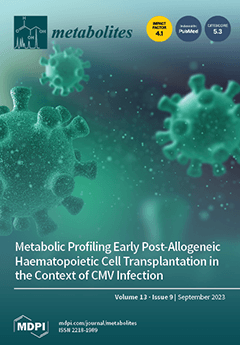Dietary fruits and vegetables play a vital role as food and drugs and are the main sources of antioxidant defences against degenerative diseases, such as brain dysfunctions, cardiovascular diseases, immune system deteriorations, and cancers, brought on by oxidative damage.
Phyllanthus emblica is a
[...] Read more.
Dietary fruits and vegetables play a vital role as food and drugs and are the main sources of antioxidant defences against degenerative diseases, such as brain dysfunctions, cardiovascular diseases, immune system deteriorations, and cancers, brought on by oxidative damage.
Phyllanthus emblica is a significant herbal remedy used in conventional medicine to recover lost strength and power. In this research, the potential value of
Phyllanthus emblica as a food and drug is researched. The total phenolic, total flavonoid, and total tannin contents as well as the nutritional value, vitamin C, vitamin E, and mineral contents of different organs of
P. emblica were evaluated. The antioxidant and antimicrobial activities of extracts and fractions of different organs of
P. emblica were determined. A total of eleven flavonoids, simple phenolic, tannin-related phenolic, and tannin molecules were isolated from a hydroalcoholic extract of the leaves and fruits. The structures were identified by spectroscopic data and comparison with the literature values as gallic acid (
1), naringenin 7-
O-(6″-
O-galloyl)-
β-D-glucopyranoside (
2), 3,3′-di-
O-methyl ellagic acid-4′-
O-
β-
d-glucopyranoside (
3), 1-
O-galloyl glycerol (
4), 1,6-di-
O-galloyl-
β-
d-glucopyranoside (
5), flavogallonic acid bislactone (
6), corilagin (
7), ethyl gallate (
8), urolithin M5 (
9), (E)-
p-coumaroyl-1-
O-
β-
d-glucopyranoside (
10), and 1,2,4,6-tetra-
O-galloyl-
β-
d-glucopyranoside (
11). Among them, compounds
3 and
10 are first isolated from the plant. Molecular docking was performed to investigate the comparative interactions between positive controls (galantamine and donepezil) and selected compounds utilizing acetylcholinesterase (4EY7) as a target receptor. Results exhibited the potency of these compounds against the target receptor. In summary,
P. emblica has a wealth of minerals, vitamins C and E, and polyphenolic phytochemicals that may work together to treat infectious disease, prevent and/or treat oxidative-damage-related illnesses including Alzheimer’s disease.
Full article






